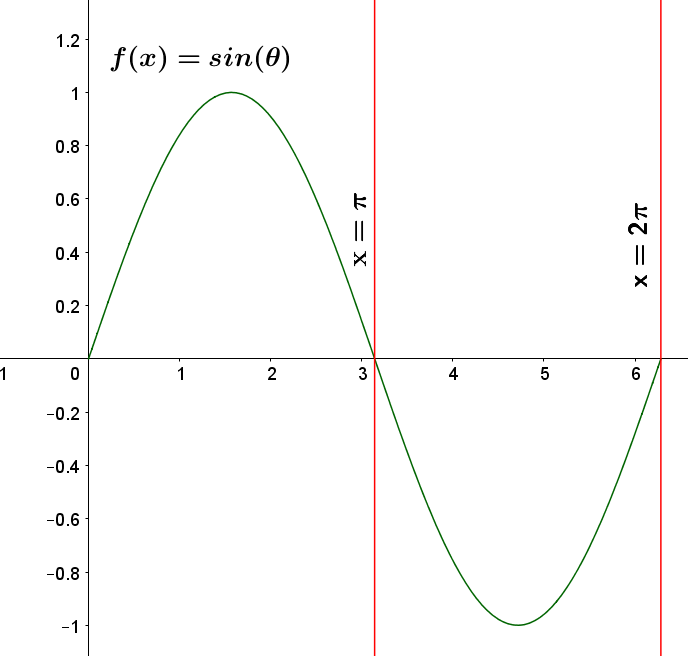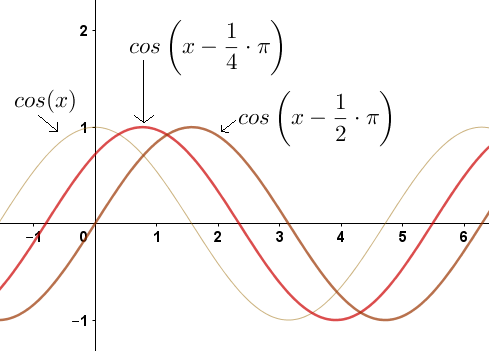Periodic Functions
If we graph $f(\theta)=sin(\theta)$, the codomain varies from $-1$ to $1$, repeating with a period of exactly $2\pi$.
Definition Period. The number of repeats per second which occur for a periodic function. The most common symbol for a period is “T”.
If the equation is represented as $f(x)=A\cdot sin(B\cdot x)$, then the period, $T=2\pi/B$. Try to remember that the oscillating graph for $\sin(\theta)$ has the $x$ axis in units of angles, probably rads.

Unfortunately, the two words, “cycles” and “rads”, used to talk about period and frequency, are not units. Or to put it another way, they are unit-less.
If we subtract a constant from the $x$ inside the function, it has the effect of moving the function to the right. To move the function up or down, we add or subtract a constant outside the function. $f(x)=cos(x)+1$ will have a codomain from $0$ to $2$.
Definition Phase Shift. The phase shift, $\phi$, is a value on the $x$-axis where the sine or cosine wave begins. Normally, if we write the standard equation as $f(x)=A\cdot sin(Bx+C)$, then $C$ represents the amount that the wave is shifted. However, it isn't direct. To obtain the phase shift, we set $$B\phi+C=0$$ $$\phi=\frac{-C}{B}$$

If a constant is multiplied times the sine or cosine function, it changes the codomain. The constant is called an amplitude. If we had $f(x)=2\cdot sin(x)$, then the codomain would go from $-2$ to $2$. So, if the function is expressed as $f(x)=A\cdot \sin(Bx)$, then the amplitude is $|A|$. Nothing inside of the function can change the codomain.
Answer: We will use the form $A\cdot sin(Bx+C)+D$. Amplitude is direct, so $A=2$. The period is $P=2\pi/B=3$, so we solve and $B=2\pi/3$. The vertical shift is again direct, so $D=2$. Finally, we want the value of the sine function to be zero when $\phi=1/2$. $$B\cdot\phi+C=0$$ $$\frac{2\pi}{3}\cdot\frac{1}{2}+C=0$$ $$C=-\frac{2\pi}{6}=\frac{-\pi}{3}$$ Therefore, the answer is $f(x)=2\cdot sin(\frac{2\pi}{3}x-\frac{\pi}{3})+2$